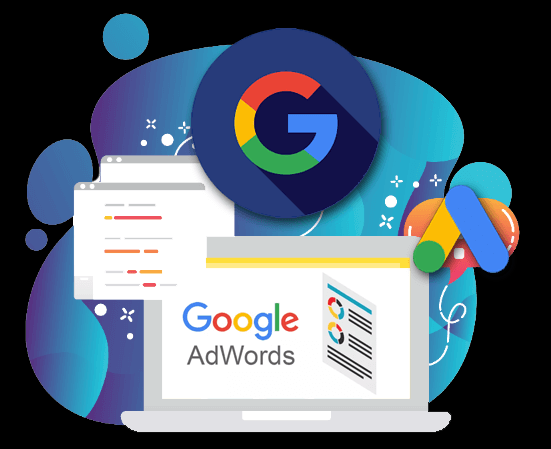In today’s digital age, Google advertising has become an essential tool for businesses to reach their target audience. With the right strategies in place, B2B marketers can leverage Google ads to generate quality leads and drive conversions.
Keyword Research: The Foundation of Your Google Ad Campaign
One of the crucial aspects of a successful Google ad campaign is selecting the right keywords. For B2B marketing, it is essential to choose highly relevant and precise keywords that will attract potential customers. Avoid the common mistake of targeting consumer-oriented keywords for B2B campaigns. To determine the suitability of a keyword, conduct a Google search and analyze the top results. If the search results predominantly display consumer-oriented businesses, it’s a clear indication that the keyword is not suitable for B2B marketing.
Determine the Right Bidding Strategy
Once you have identified the relevant keywords, it’s crucial to research and determine an appropriate bidding strategy. Setting your ad bids too low may result in limited exposure and fewer impressions, making it challenging to reach potential customers. Tools like Keyword Planner or SEMrush can help you research and establish optimal bidding values based on the competitiveness of the keywords.
Landing Pages and Funnels: Creating a Clear Path to Conversion
In B2B marketing, it is recommended to create specific landing pages and funnels rather than directing ads to the homepage or other general pages of your website. Landing pages provide a clear and concise marketing message, making it easier for potential customers to understand your offerings and take the desired action. Additionally, implementing a funnel approach in your ad campaigns can be highly effective. For instance, instead of immediately asking for a quote, you can guide potential customers through a series of steps to gradually activate their interest and encourage them to inquire about your products or services.
Creating Your Google Ad Campaign
Once you have completed the necessary preparations, it’s time to create your Google ad campaign. The following steps outline the fundamental process:
Define Your Advertising Goals
Before creating your ads, it’s important to define your advertising goals clearly. Determine the specific product, service, or website you want to promote and establish the objectives you aim to achieve, such as increasing website traffic or improving conversion rates.
Select Relevant Keywords
Choose keywords that are closely related to your ad theme. By selecting keywords that align with your offerings, your ads have a higher chance of appearing in search results when users search for those specific terms on Google.
Create Campaigns
In Google Ads, campaigns are organizational units that group your ads. When creating a campaign, you need to set parameters such as budget, geographic targeting, and scheduling.
Create Ad Groups
Ad groups further refine your campaign structure by grouping together ads and related keywords. Organize your ad groups based on product categories, targeting options, or ad types.
Craft Compelling Ad Copy
Write engaging and persuasive ad copy for each ad group. Ensure that your ad copy aligns with the selected keywords and encourages users to click on your ads.
Set Bids and Budgets
Set appropriate bids for each keyword based on your budget and advertising goals. Additionally, establish a total budget for each campaign to ensure that your ad spend remains within your limits.
Implement Conversion Tracking
If your goal is to increase conversions, consider implementing conversion tracking. This allows you to track and measure the performance of your ads in terms of generating desired actions, such as purchases or registrations.
Review and Launch Your Ads
Once you have created your ads, Google Ads will review them to ensure compliance with their advertising policies. After approval, you can launch your campaign, and your ads will start appearing in Google search results.
Best Practices for Google Ad Placement
While creating Google ad campaigns is relatively straightforward, it’s essential to pay attention to specific details to maximize your ad placement performance. Here are some best practices to consider:
Avoid Broad Match Keywords Initially: To ensure more precise targeting and avoid wasting ad spend, it is recommended to avoid using broad match keywords at the beginning of your campaign.
Limit Keywords per Ad Group: Restrict the number of keywords to a maximum of 30 per ad group to maintain relevancy and focus.
Optimal Number of Ad Groups: Aim for no more than five ad groups within a campaign to maintain organization and manageability.
Multiple Ads per Ad Group: Include at least two ads per ad group to test different messaging and determine which performs better.
Conclusion
By following the steps outlined in this article, B2B marketers can create highly effective Google ad campaigns to reach their target audience and generate valuable leads. Remember to perform thorough keyword research, design compelling landing pages and funnels, and carefully structure your campaigns and ad groups. With continuous optimization and monitoring, you can maximize your Google ad placement and achieve your advertising goals in the B2B market.
Remember, success in Google ad placement requires strategic planning, continuous optimization, and a deep understanding of your target audience. Implement these best practices and enjoy the benefits of a successful B2B Google ad campaign.
Liked this article? Don’t forget to bookmark it for future reference!


